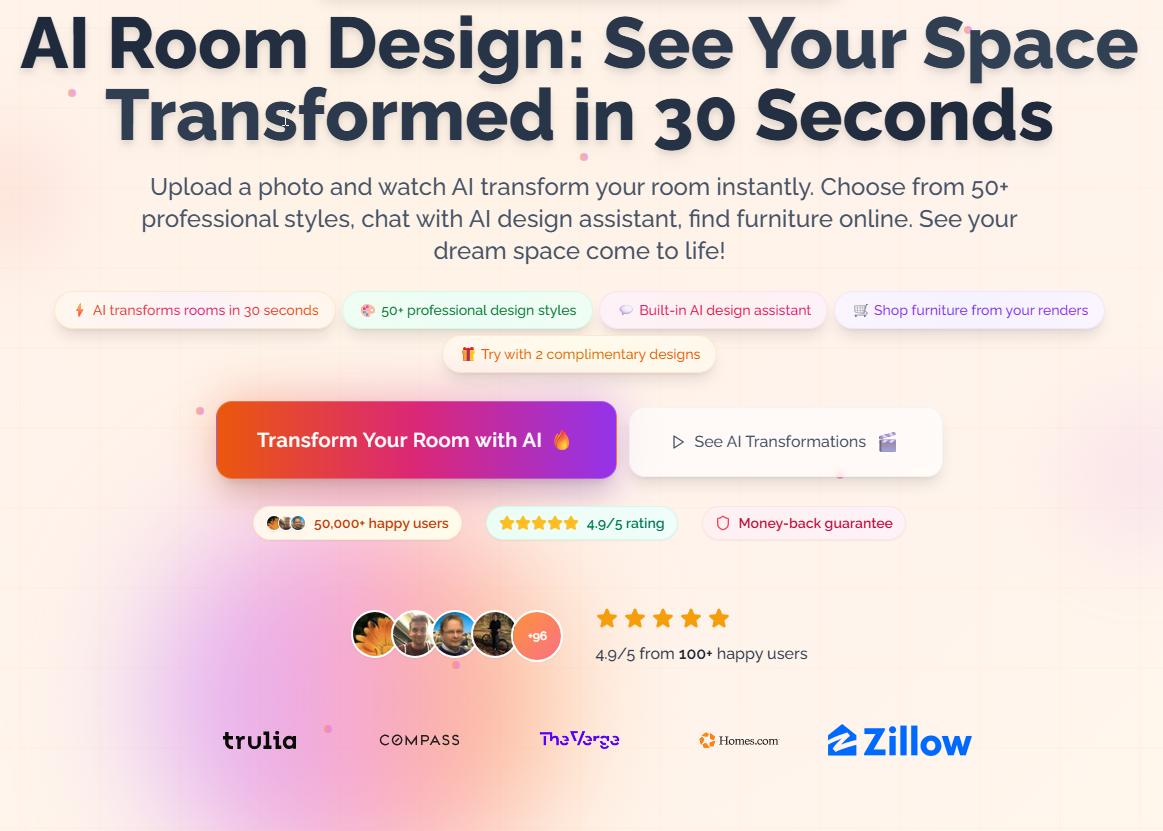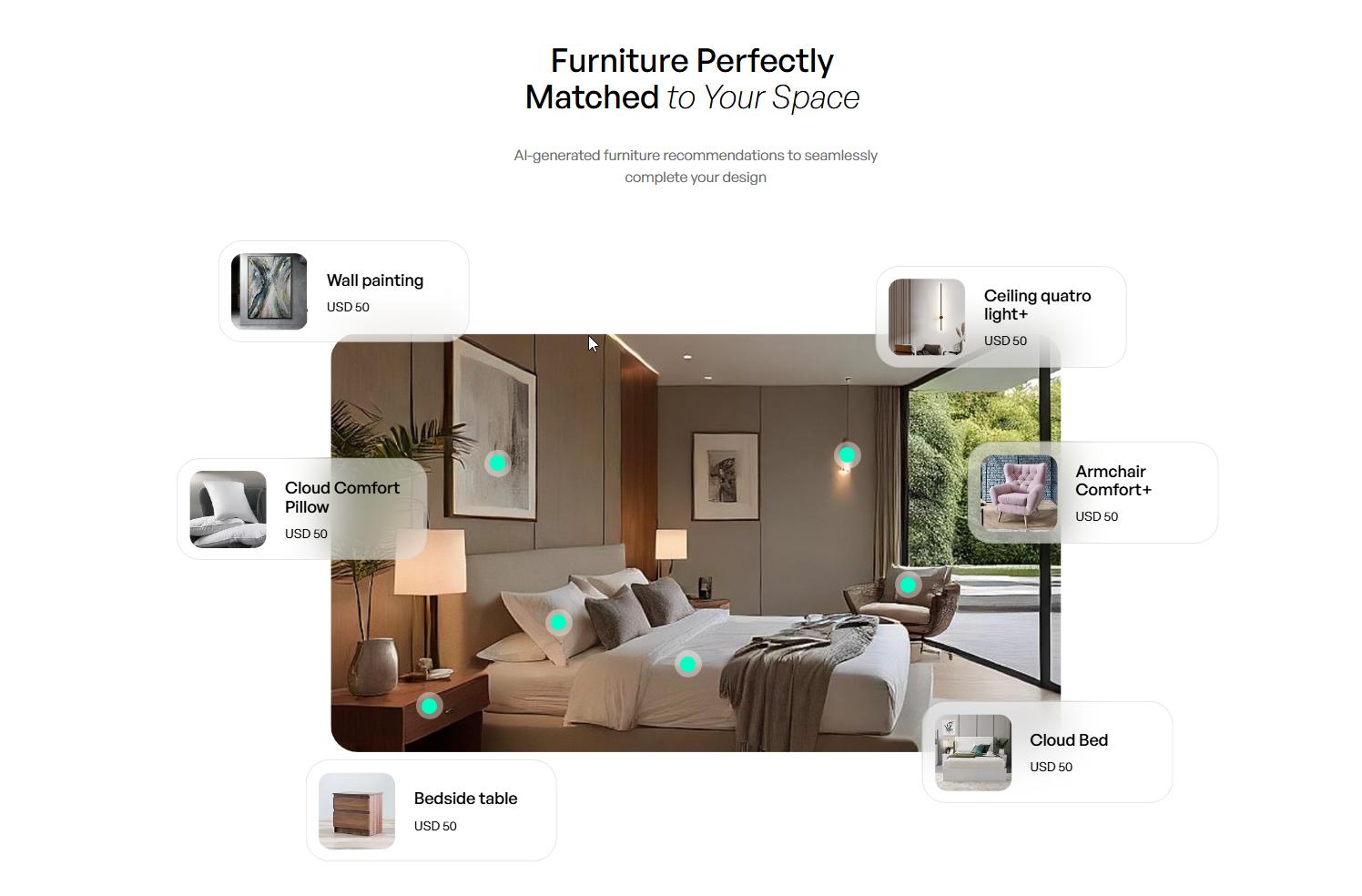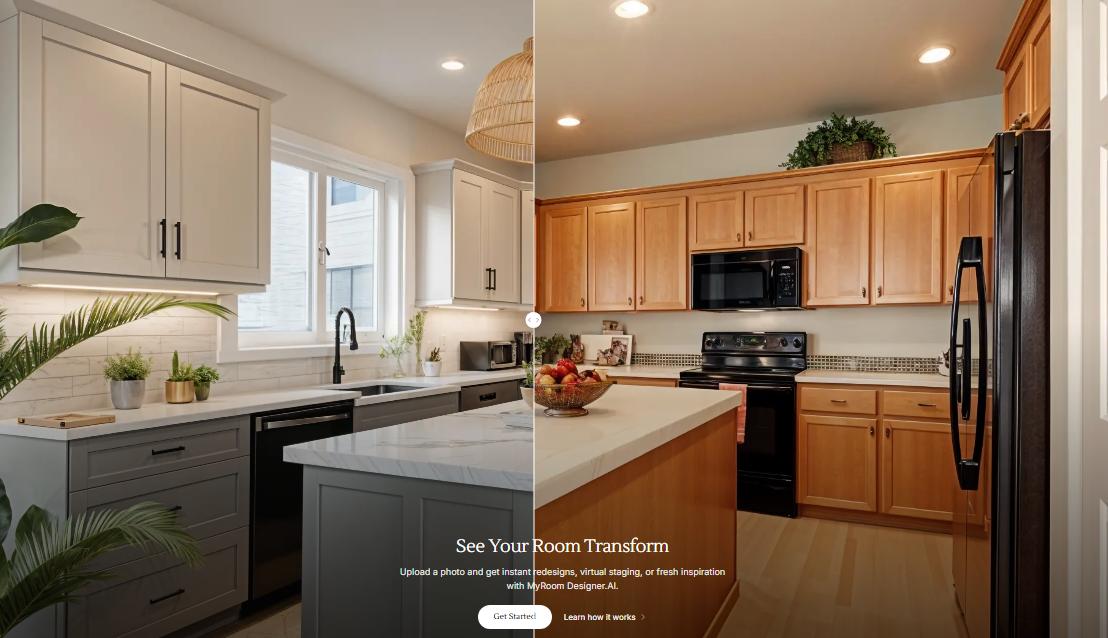7 min. reading
Juliy Cherevko
CEO paintit.ai

The market for generative AI interior design tools is rapidly evolving. What was once a simple concept visualization has now transformed into specialized solutions for professional workflows, ranging from real estate virtual staging to architectural preliminary design.
Early market leaders, such as RoomGPT, certainly defined the initial category, but they are now being actively strategically outmaneuvered by new platforms that address their primary failings: the restrictive credit model and issues related to functional reliability. We, the Paintit.ai team, have deeply analyzed this shift. We see that users are no longer satisfied with mere speed; they are looking for functional reliability and honest monetization.
This is an evolutionary transition. That is why many designers and realtors are actively seeking a reliable RoomGPT alternative-a tool that ensures the quality of the result. The current market is defined by solutions that focus on "unlimited free" access and high accuracy, offering truly effective RoomGPT Alternatives.
In this article, we will examine the key players, their technical advantages, and explain why, for professional purposes, "free" only serves as a demonstration of capabilities, while true value is always tied to photorealism and commercial licensing.
Why does the first generation of AI generators, including RoomGPT, no longer meet market demands? The core issue lies in a critical deficit: functional reliability, compounded by an inefficient payment model.
RoomGPT served as a powerful early innovator, delivering rapid room redesigns and quick visualization. However, its core limitations have created significant market gaps exploited by competitors. The most critical deficit is RoomGPT's failure in functional reliability, specifically concerning object recognition and spatial integrity. User feedback consistently documents instances where the AI misinterprets crucial room elements-such as a TV being transformed into a window or a dining table mutating into a kitchen island.
This inaccuracy is particularly painful due to RoomGPT's monetization model, which typically features a restrictive free tier (often limited to one free credit or generation). When users pay for credits only to receive results with fundamental architectural errors, it generates intense frustration. We call this the "accuracy tax." This proves that users now prioritize functional reliability over mere speed or basic style application.
This high cost of errors is precisely what prompts designers and realtors to search for a reliable room GPT alternative. The market today demands solutions that not only rapidly generate ideas but also correctly understand spatial geometry.
Our research indicates that the most successful RoomGPT Alternatives have strategically countered its primary market weaknesses by deploying generous freemium models coupled with explicit claims of superior AI accuracy.

Decoratly has positioned itself as the "Professional RoomGPT Alternative," directly attacking the limitations of its predecessor. The platform offers "Unlimited Free Generations," eliminating the anxiety and friction associated with credit-based systems. This aggressive approach serves as a powerful lead generation strategy, drawing in users frustrated by the high costs and limited trials of competitors.
Key Advantages: Decoratly's marketing emphasizes its technical superiority, claiming 98% accuracy in object recognition. This directly addresses the costly spatial errors seen in earlier AI models.
Use Case: Ideal as a Room GPT free alternative for initial brainstorming and quickly obtaining conceptual ideas. The platform boasts a rapid processing speed of 15 seconds.

Spacely AI offers another compelling Roomgpt alternative, also promoting unlimited free designs. Its focus is shifted toward high-value professional applications, particularly virtual staging.
Key Advantages: Virtual staging is critical for real estate marketing, as it instantly furnishes empty rooms, helping potential buyers visualize a property's true potential and accelerating sales. Spacely AI provides visuals with superior structural accuracy, detailed textures, and realistic lighting and shadows, making the outputs "presentation-ready" for clients.
Use Case: While RoomGPT delivers fast, stylized visuals, Spacely AI provides visuals with superior quality and accuracy. The platform's versatility allows professionals to input photos, simple sketches, or even white 3D renderings.

Our platform, Paintit.ai, distinguishes itself due to its unique product positioning and sophisticated hybrid monetization strategy.
Key Advantages: The most significant differentiator is its dual focus: providing dedicated AI solutions for both Interior Design and AI exterior design. This exterior capability, which addresses facade changes, siding updates, and landscape visualization, caters to a wider segment of the home renovation market and appeals to professionals managing full property transformations.
We recognized the need for a reliable tool to work with exteriors, allowing designers and developers to visualize the full scope of a property. If you need not only to redesign a room but also to see how your house will look after a facade change, we offer a specialized AI exterior design generator.
Monetization: Paintit.ai utilizes a classic freemium structure, offering users to generate the first two variants without charge. We strategically employ the "freemium quality gap": high-value features (HD renders, Commercial Usage License, full access to the furniture library) are locked behind subscriptions or token purchases. This ensures that the free tier operates as a sophisticated demonstration tool, forcing any professional user who requires presentation-ready assets to immediately convert to a paid tier.

MyRoomDesigner.AI is an example of how a Roomgpt alternative can move beyond simple visualization by integrating practical post-design features.
Key Advantages: Key functionalities include Mood Board creation, real-time Live Chat support, and crucial Cost Estimates, which provide automated shopping lists with current price details and budget estimations.
Use Case: This focus on practicality and budget tracking streamlines the design-to-purchase process for both professionals and DIY renovators.
The maturity of the AI design space is best gauged by its success in maintaining spatial integrity-the accurate understanding and representation of a room's layout, architectural elements, and furniture placement.
Early models, like RoomGPT, struggled immensely with this, leading to structural absurdities. Modern Roomgpt alternatives have addressed this by developing advanced Computer Vision and Room Analysis AI.
Decoratly's claim of 98% accuracy is evidence of this maturation, demonstrating investment in systems that calculate room proportions, identify traffic flow patterns, and recognize optimal furniture placement zones.
This emphasis on architectural precision differentiates reliable professional tools from unreliable quick generators.
For platforms targeting professional users-particularly in real estate and design-assets must be indistinguishable from professional photography. RoomGPT Alternatives like Spacely AI and ArchiVinci prioritize photorealism by investing in models that accurately simulate:
Realistic Lighting: Complex shadows and their interaction with objects.
Detailed Materials: Accurate textures (wood, stone, fabric).
Spacely AI, for instance, offers visuals that are presentation-ready for clients. Features like high-resolution upscaling, offered by MyRoomDesigner.AI, are essential for transforming conceptual mockups into detailed deliverables. High quality is critical for clients involved in visualization and rendering.
Modern AI design platforms are expanding their utility beyond simple style substitution by integrating advanced toolsets:
Virtual Staging (V-Staging): The ability to instantly furnish empty rooms (a key offering of Spacely AI) is a requirement for fast and efficient real estate marketing.
Sketch-to-Render: Tools that convert simple conceptual sketches into high-fidelity renders (as in NewRoom.io) drastically accelerate the conceptual design phase. This is an excellent feature for quick idea validation, which we also support in our AI concept generator.
Post-Generation Editing: Platforms are moving toward offering full creative control. Features such as generative fill, instant upscaling, and the ability to remove or replace objects allow designers to refine renders without returning to the generation phase.
The transition away from traditional, flat-rate subscriptions is accelerating, driven by the highly variable and high costs associated with premium AI feature usage.
The model based on pooled credits, or the usage-based hybrid model employed by Paintit.ai, is becoming the standard.
A credit system, like RoomGPT's, can quickly become expensive and unpredictable. If numerous design experiments are needed (which is inevitable in creative exploration), the cumulative cost can exceed $50, which is a significantly higher price per render than newer Roomgpt alternatives offer. This causes "credit anxiety" and limits user creativity.
Our platform has adopted a hybrid pricing architecture, combining the predictability of subscription payments with the flexibility of usage-based tokens. This allows us to maintain predictable recurring revenue for core access while ensuring that users who consume expensive, high-volume compute resources (e.g., generating 4K renders or running complex algorithms) pay proportionally for that usage via tokens.
Analysis shows that for professionals with consistent usage, the monthly plan offers the best cost-efficiency. For instance, our monthly plan (at the discounted rate) offers approximately $0.25 per high-resolution render, making it significantly more cost-efficient for consistent users compared to the credit systems of competitors.
Free Tier: 2 initial variants. Serves as a qualified demonstration for basic layouts.
Monthly Subscription: 100 high-resolution renders. The best value for consistent, high-volume output, including a Commercial Usage License.
Token Model (Add-on): Provides flexibility for ad-hoc needs that exceed subscription limits.
The analysis confirms that while RoomGPT pioneered the rapid AI design category, its operational shortcomings-namely the high cost and low reliability of its credit-based system-have been decisively exploited by second-generation platforms.
What does the optimal Roomgpt alternative look like? The choice heavily depends on the specific use case:
| User Scenario | Optimal Platform | Justification |
| Conceptual Brainstorming (DIY) | Decoratly | Unlimited free generations and high recognition accuracy minimize frustration and wasted time during initial experiments. |
| Real Estate Staging | Spacely AI / REimagine Home | Specialized focus on virtual staging and photorealistic quality essential for property marketing and client visualization. |
| Renovation Planning (Int/Ext) | Paintit.ai | Unique capability to visualize both interior style changes and full facade/landscape renovations. |
| Execution & Budgeting | MyRoomDesigner.AI / Houzz Pro | Integration of non-visual features, such as cost estimates and project management. |
Our Recommendations:
For Conceptual Ideation (Stage 1): Design professionals should leverage the generous, high-accuracy generators, specifically Decoratly or Spacely AI, for rapid brainstorming. These platforms offer the highest volume of design possibilities at the lowest initial friction.
For Final Deliverables (Stage 2): When preparing client presentations or marketing materials, you must budget for premium access. RoomGPT Alternatives like Paintit.ai (via the Monthly Subscription for interior/exterior projects) or Spacely AI (for superior virtual staging photorealism) offer the required high-resolution, watermark-free outputs and commercial licensing.
Remember: the free tier is a high-tech demonstration tool, but for creating professional, publish-ready assets, you need the power and accuracy available only in paid tiers.

7 min read
Analysis of the best RoomGPT Alternatives. Discover why Decoratly, Spacely AI, and Paintit.ai outperform the competition with superior accuracy and hybrid monetization. Choose your tool
Juliy Cherevko
CEO paintit.ai

9 min read
Agentic AI Commerce is here. Discover how autonomous AI agents are moving interior design from "mood board" to "project realized" and what it means for you.
Juliy Cherevko
CEO paintit.ai

6 min read
Agentic AI is moving e-commerce from generative tools to autonomous actors. Learn the $5T opportunity, the "Gen AI Paradox," and the 3-step strategy to survive.
Juliy Cherevko
CEO paintit.ai

5 min read
Learn what harmony in interior design truly means and how it differs from unity. Discover 3 simple tools to create a cohesive, harmonious space
Juliy Cherevko
CEO paintit.ai

17 min read
Looking for a Planner 5D alternative? We review 9 free & pro tools for 2D planning, 3D rendering, and AI redesign. Find your fit.
Juliy Cherevko
CEO paintit.ai

10 min read
Learn how to use AI to design a room-pro prompts, a repeatable workflow, and hands-on steps with Paintit.ai for redesigns, staging, and targeted edits.
Juliy Cherevko
CEO paintit.ai